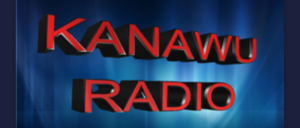Business News of Thursday, 16 January 2025
Source: starrfm.com.gh
The Ghana Statistical Service (GSS) is urging the government to tackle the prices of 15 key items, which it says are driving nearly a third of the country’s inflation.
This comes as Ghana ended 2024 with an inflation rate of 23.8%, far above the government’s 15% target.
With a new target of 8% set for 2025, the Statistical Service warns at a stakeholder engagement analyzing the historical trend of inflation since the economy was rebased in 2018, that urgent action on these items, which have featured predominantly, is critical to stabilizing the economy and easing the cost of living for Ghanaians.
The 15 items, comprising 13 food items—smoked herrings (popularly known as Amane), large onions, sea fish, yam, beef, kenkey with fish, local gin (Akpeteshie), imported rice, fresh tomatoes, bread, cooked rice and stew, fried plantain and beans (Gob3), and smoked river fish—and 2 non-food items—petrol and bus and trotro fares—recorded cumulative inflation ranging from 140% to 400% between 2018 and 2024.
Data Scientist with the GSS, Simon Onilimor Tichutab, subsequently impressed upon the government the need to tackle the gap between farm gate and market prices to manage inflation.
“Given the fact that we have 13 food items featuring, we need to look at our food basket as a country. Are we producing enough, and what we are producing, what is the gap between the farm gate and what happens when transmitting this food price from the farms into the market? We need to have a broader stakeholder consultation to see how each ministry involved, as far as this food price monitoring is concerned, can drive down inflation,” he told journalists on the sidelines of the stakeholder engagement.
Simon Onilimor Tichutab further urged the government to improve its buffer stock regime to address price hikes occasioned by seasonality.
“Yam, for example, is a seasonal item; fresh tomatoes are a seasonal item. We realize that periods where we observe a significant drop in inflation for yam affect the division’s inflation, so it tells us that seasons actually play a role,” he disclosed.
“Yam, for instance, over the period between August and September, there is a marginal drop in the price of yam per kilogram. So what are we doing as a country to address these seasonal issues? Maybe in areas where we have bumper harvests, we are able to have buffer stocks where we can keep some of these seasonal foods, so that in periods where we don’t have higher harvests, we are able to release these foods to ease the prices of some of these food items,” Mr. Tichutab further queried.
Of the 72 monthly data points observed between 2018 and 2024, bus and trotro fares made an appearance in the top 15, 70 times, with imported rice and smoked herrings making up the top 3 with 65 and 58 entries, respectively.
The 15 items cumulatively make up 30.6%, i.e., nearly a third of the weight of the country’s inflation basket of 307, emphasizing their importance in the everyday life of the Ghanaian.
 Kanawu Radio number 1 news portal
Kanawu Radio number 1 news portal

